Russian River Cruise - May-June 2006
MS Lev Tolstoy - Amadeus Waterways

Itinerary
St. Petersburg sailing to Mandrogi on the Neva through Lake Ladoga and the Svir River
Mandrogi to Kizhi Island, Karelia, via Svir River through Lake Onega
Kizhi Island to Goritsy via Lake Onega, the Volga-Baltic Canal and Beloye Lake
Goritsy to Yaroslavl via the Sheksna River, Rybinsk Reservoir, and the Volga River
Yaroslavl to Kostroma via the Volga River
Kostroma to Uglich via the Volga River
Uglich to Moscow via the Moscow Canal

MS Lev Tolstoy tied up at Mandrogi
St. Petersburg - 31 May to 2 June 2006
St. Petersburg was founded in 1703 by Tsar Peter the Great. The city was the capital of Russia until the Soviet era. During 1914, the city was renamed Petrograd because of anti-German sentiment. After Lenin died the city was renamed Leningrad. The city was besieged by the Germans for 900 days in World War II. Over 600,000 people died during the siege. In 1991, the residents voted to restore the original name St. Petersburg to the city. There are several beautiful palaces in the area including the Winter Palace which is now part of the Hermitage Museum, Catherine the Great's Palace in Tsarskoye Selo (formerly known as Pushkin) 25 km. south of the city, and Peterhof in Petrodvorets about 35 km. from the city on the Baltic Sea. Catherine's palace in Tsarskoye Selo was built between 1717 and 1723 by the architect Braunstein but much of it was destroyed by German bombings in WWII. Preterhof was built by Peter the Great from 1714 to 1725.
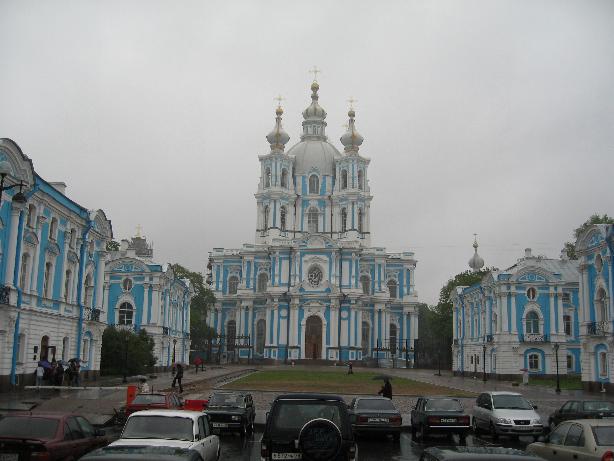
Smolny Cathedral
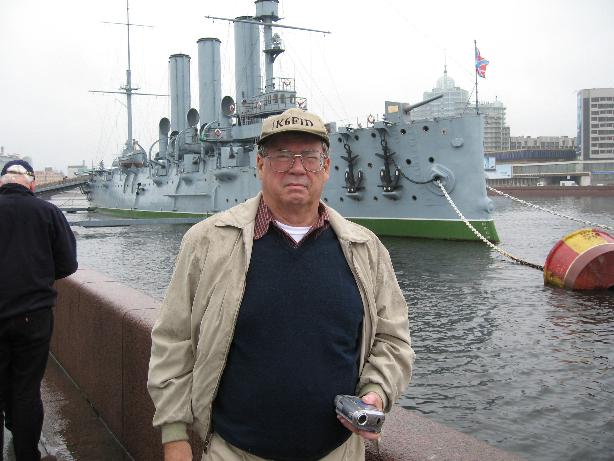
Phil at the Cruiser Aurora tied up in the Neva River
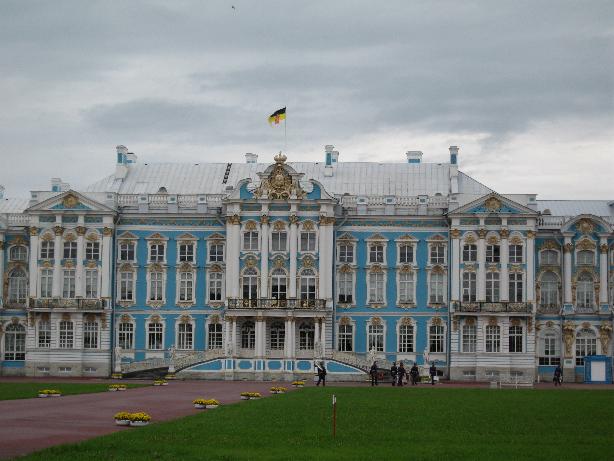
Tsarskoe Selo - Catherine the Great Palace
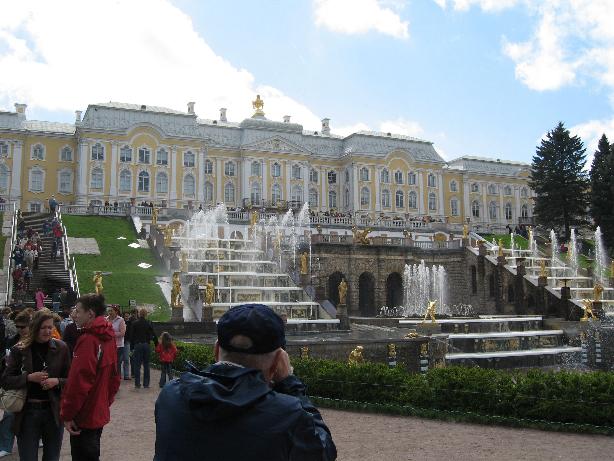
Petrodvorets - Peterhof
Palace of Peter the Great located on the Baltic Sea
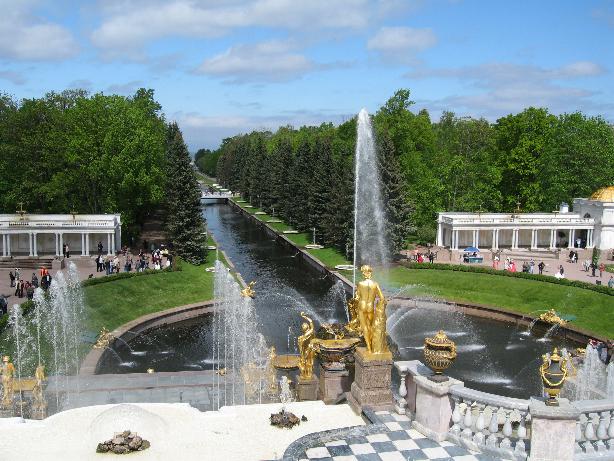
The Gardens at Peterhof looking down the canal to the Baltic Sea
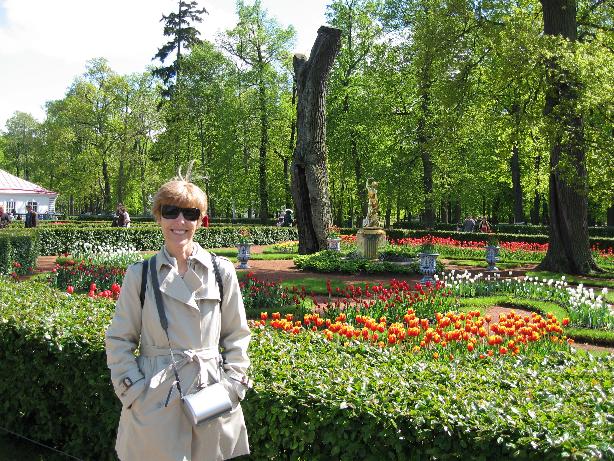
Marilyn in the gardens at Peterhof
Verkhnie Mandrogi - 3 June 2006
Verkhnie Mandrogi is a spot created especially for tourists. A few families live there but most are supported by the river cruise tourists. There is a so-called Vodka Museum which really is set up to sell bottles of vodka. The rest of the compound are souvenier shops and places to eat and drink. I presume that this is used simply because it is a day's sailing from St. Petersburg. We saw no large cities along the Svir River.
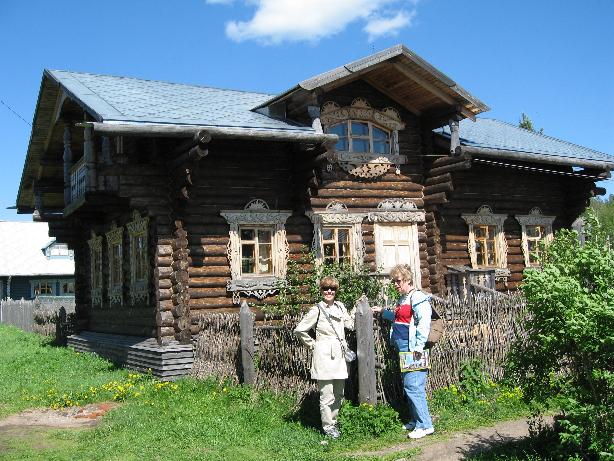
Marilyn and friend Sheila McGowan at local home
Kizhi Island - 4 June 2006
Kizhi Island again is a living history museum of domiciles, churches, barns, a bathhouse, and other such buildings collected from the surrounding areas of Karelia. It was interesting to tour these structures to see how the people of Karelia in northern Russia lived during past centuries.
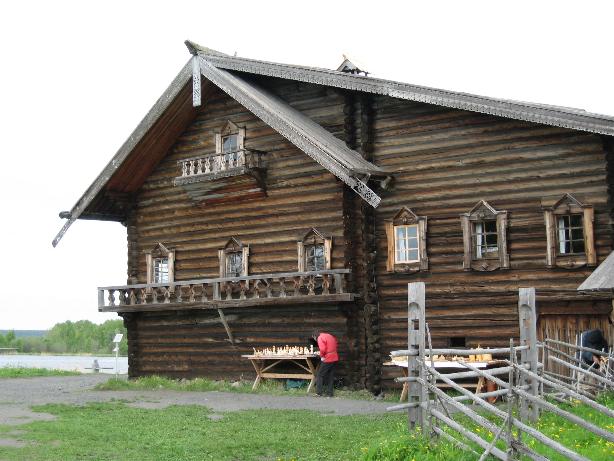
House of Peasant Elizarov moved from Potenivshchina village
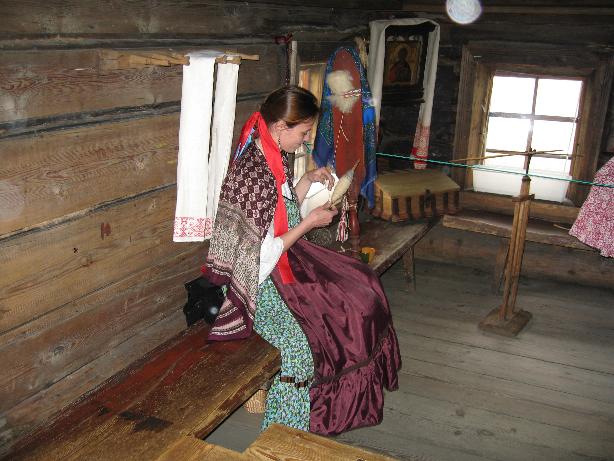
Woman spinning yarn to Elizarov house
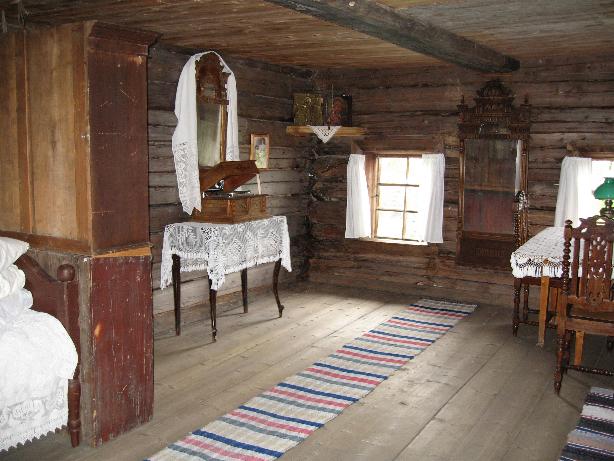
Living area on Elizarov house
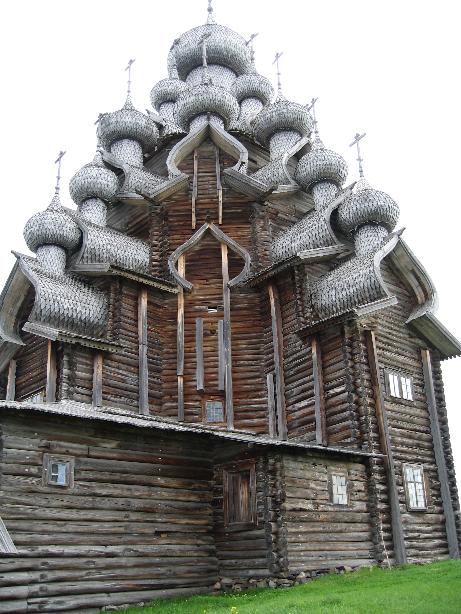
Church of the Transfiguration, all wooden structure
Goritsy - 5 June 2006
Goritsy is a small town that we visited. There were dirt streets, small houses in various stages of upkeep and people what they do everyday in a small town. The main attraction is the Monastery of St. Cyril. The monastery was founded in 1397 on the bank of the Siverskoe Lake, to the south from the town of Beloozero, in the present-day Vologda region. Its founder, Saint Kirill of Beloozero, following the advice of his teacher, Saint Sergius of Radonezh, first dug a cave here, then built a wooden Assumption chapel and a loghouse for other monks. The Bolsheviks turned the site into a museum in 1924. The place was returned to the Church in 1998 after the fall of communisn.

Kirillo-Belozersky Monastery
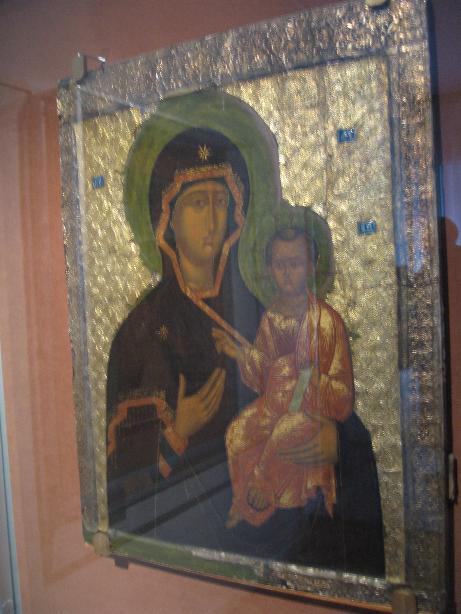
Icon of Mary and Jesus
Yaroslavl - 6 June 2006
Yaroslavl was founded in 1010 by Kiev Prince Yaroslav the Wise. According to the ancient legend Yaroslav killed a bear just in the place where the present day Yaroslavl is situated and ordered to found a fortress here. This nice legend gave the emblem to the town, a bear with a pole-axe represented on a silver shield. In the 17th century it was Russia's second largest city and, for a time (during the Polish occupation of Moscow in 1612), the country's de facto capital. Now Yaroslavl is an important industrial center
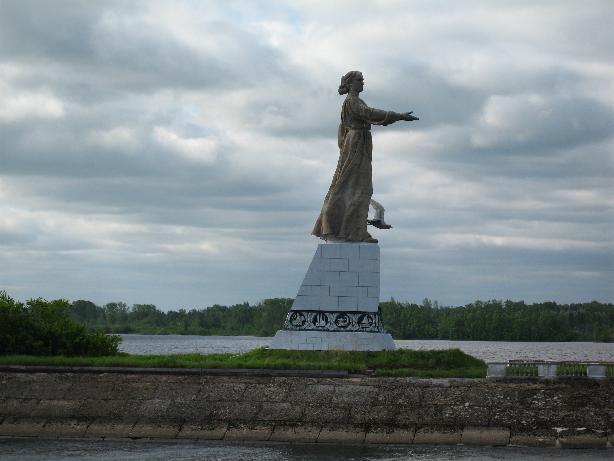
Mother Volga statue
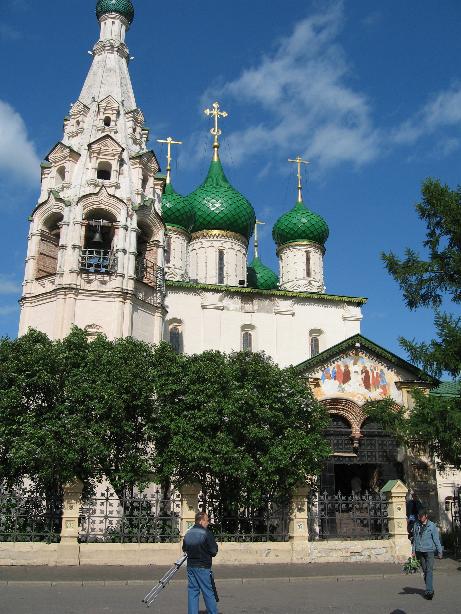
Church of the Prophet Elijah
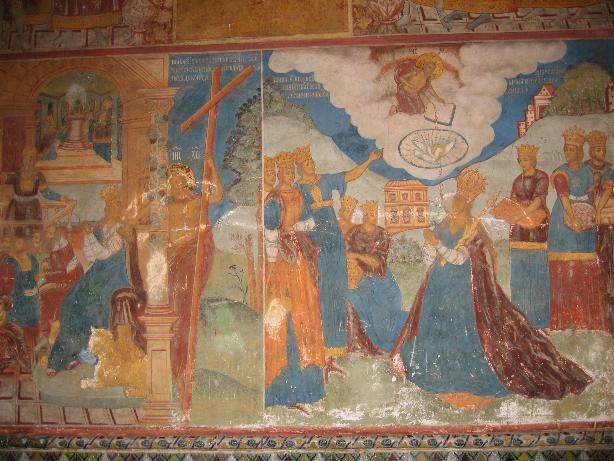
Fresco at the Church of the Prophet Elijah

Church of the Prophet Elijah
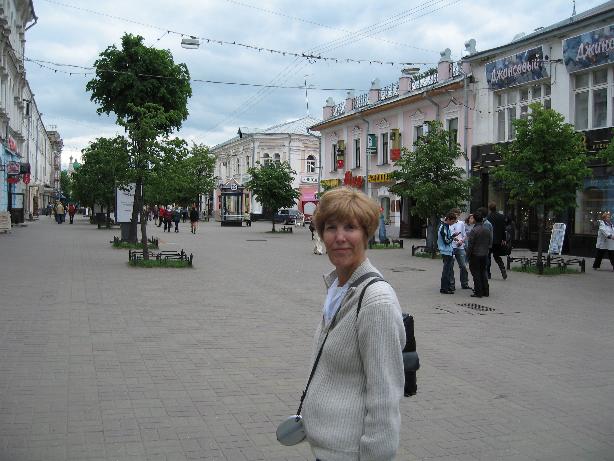
Marilyn on Yaroslavl street
Kostroma - 7 June 2006
Kostroma was first recorded in the chronicles for the year 1213, but historians believe it may have been founded by Yury Dolgoruky more than half a century earlier. Like other towns of the Eastern Rus, Kostroma was sacked by the Mongols in 1238. It then constituted a small principality, under leadership of Prince Vasily the Drunkard, a younger brother of the famous Alexander Nevsky. Upon inheriting the grand ducal title in 1271, Vasily didn't leave the town and his descendants ruled Kostroma for another half a century, until the town was bought by Ivan I of Moscow. As one of the northernmost towns of Muscovy, Kostroma served for grand dukes as a place of retreat when enemies besieged Moscow in 1382, 1408, and 1433. Boris Godunov had the Ipatievsky and Epiphany monasteries rebuilt in stone. The construction works were finished just in time for the city to witness some of the most dramatic events in the Time of Troubles. Kostroma was twice ravaged by the Poles; it took a 6-month siege to expel them from the Ipatievsky Monastery. The future tsar, Michael Romanov, also lived at the monastery. It was here that an embassy from Moscow offered him the Russian crown in 1612.
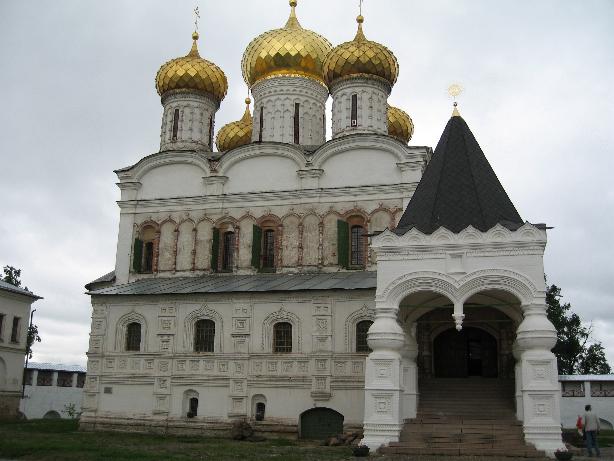
Trinity Cathedral at Ipatyevsky Monastery
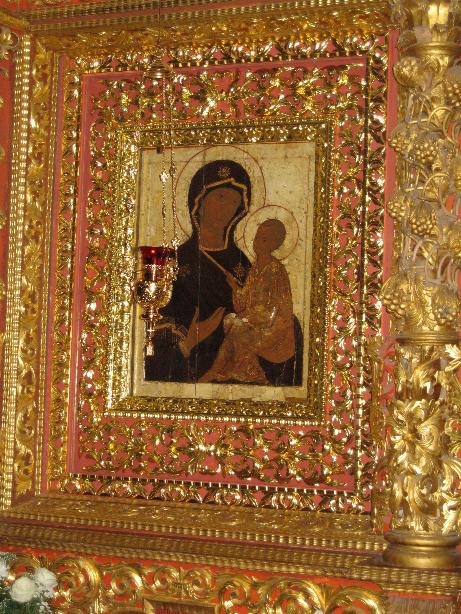
Holy icon at Trinity Cathedral
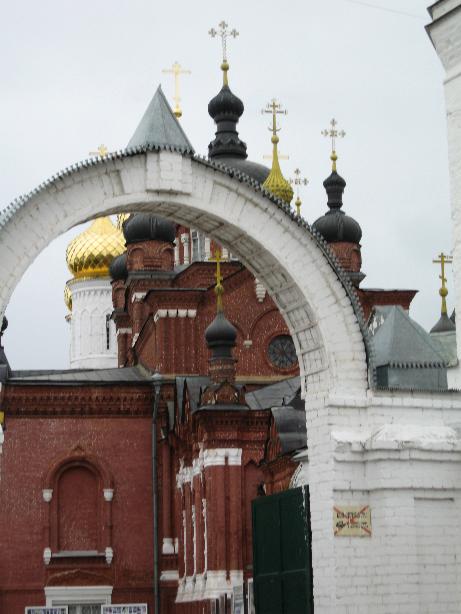
Epiphany Cathedral
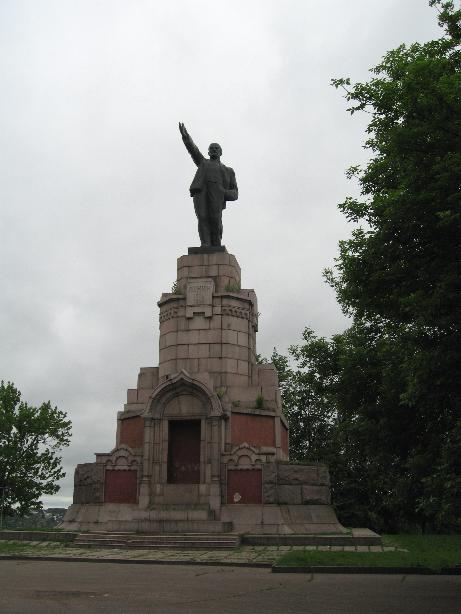
Statue of Vladimir Ilyich Ulyanov (aka Lenin)

Marketplace
Uglich - 8 June 2006
Uglich was first mentioned in 1148 though local tradition says the town was founded in 937. In the 16th century, Ivan the Terrible used Uglich as a base for attacks against the Tatars. Uglich had been the seat of a small princedom from 1218 until 1328 when the local princes sold their rights to the great prince of Moscow. As a border town of Muscovy, it was burnt several times by Lithuanians, Tatars and the grand prince of Tver. Grand Duke Ivan III of Moscow gave the town to his younger brother Andrei Bolshoi in 1462. During Andrei's reign the town was expanded and first stone buildings were constructed. Particularly notable were the cathedral (rebuilt in 1713), the Intercession Monastery (destroyed by the Bolsheviks) and the red-brick palace of the prince (completed in 1481 and still standing). During the reign of Ivan the Terrible the town passed to his only brother, Yuriy. Local inhabitants helped the tsar to capture Kazan by building a wooden fortress which was transported by the Volga all the way to Kazan. Throughout the 16th century Uglich prospered both politically and economically, but thereafter its fortunes began to decline. After Ivan's death, his youngest son Dmitry Ivanovich was banished to Uglich in 1584. The most famous event in the town's history took place on May 15th, 1591 when the 7-year old boy was found dead with his throat cut in the palace courtyard. Suspicion immediately fell on the tsar's chief advisor, Boris Godunov. Official investigators concluded however that Dimitriy's death was an accident.
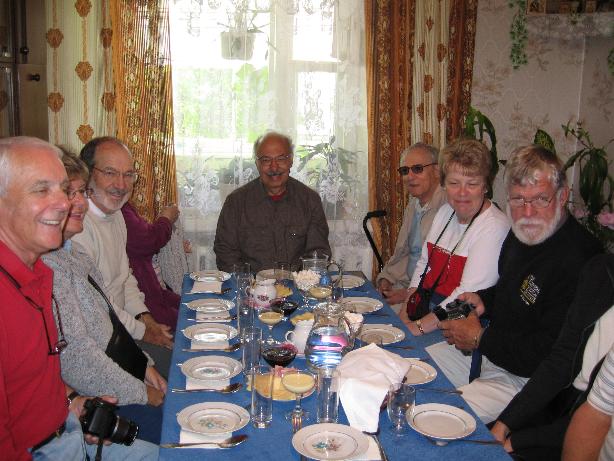
Breakfast at Russian family apartment
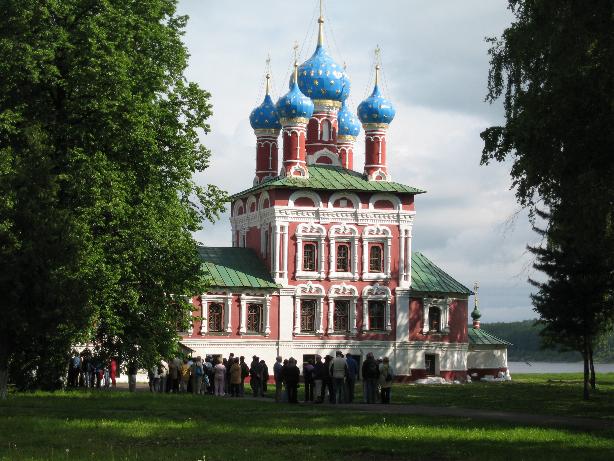
Church of St. Dimitri-of-the-Blood

Marilyn and Phil
Moscow - 9 - 12 June 2006
The first reference to Moscow dates from 1147 when it was an obscure town in a small province inhabited mostly by Merya, speakers of a now extinct Finnic language. In 1156, Prince Yuriy Dolgorukiy ordered the construction of a wooden wall and a moat around the city. After the sacking of 1237-1238, when the Mongols burned the city to the ground and killed its inhabitants, Moscow recovered and became the capital of an independent principality. Moscow developed into a stable and prosperous principality for many years and attracted a large number of refugees from across Russia. Under Ivan I the city replaced Tver as capital of Vladimir-Suzdal and became the sole collector of taxes for the Mongol rulers. By paying high tribute, Ivan won an important concession from the Khan. Unlike other principalities, Moscow was not divided among his sons but was passed intact to his eldest. In 1380, prince Dmitry Donskoy of Moscow led a united Russian army to an important victory over the Mongols in the Battle of Kulikovo. After that, Moscow took the leading role in liberating Russia from Mongol domination. In 1480, Ivan III had finally broken the Russians free from Tatar control, bringing Moscow to the zenith of power for a while. The Russian capital, which had wandered from Kiev to Vladimir, came rest in this city by the end of his reign, and Moscow became the capital of an empire that would eventually encompass all of Russia and Siberia, and parts of many other lands. The 17th century was rich in popular risings, such as the liberation of Moscow from the Polish invaders (1612), the Salt Riot (1648), the Copper Riot (1662), and the Moscow Uprising of 1682. The city ceased to be Russia's capital in 1703, after founding St. Petersburg by Peter the Great on the Baltic coast. When Napoleon invaded in 1812, the Muscovites burned the city and evacuated, as Napoleon's forces were approaching September 14. Napoleon's army, plagued by hunger, cold, and poor supply lines, was forced to retreat. Following the success of the Russian Revolution in 1917, Lenin, fearing possible foreign invasion, moved the capital from Petrograd back to Moscow on March 5, 1918. The Germans reached the heights around Moscow in 1941 but the Red Army kept the would-be occupiers at bay.
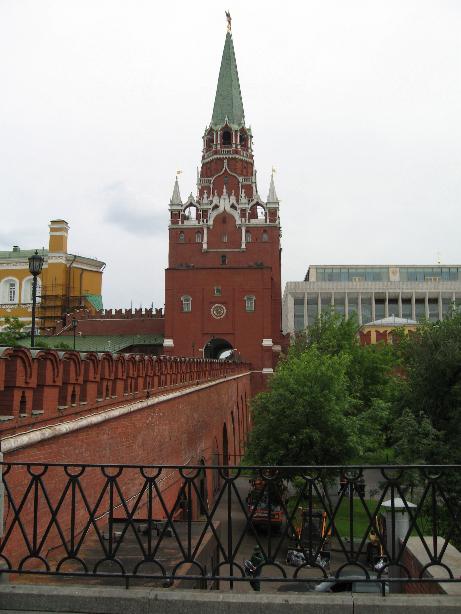
Kremlin
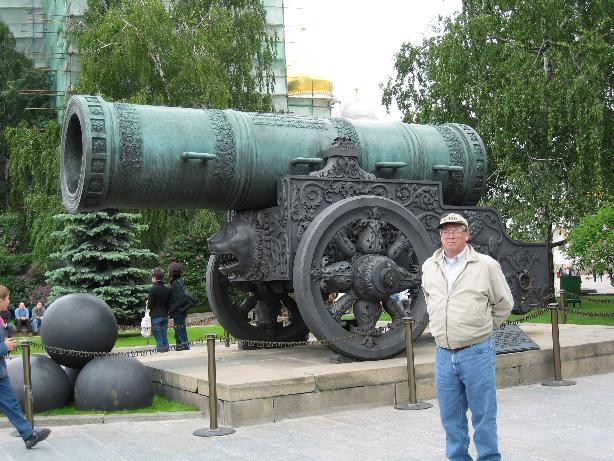
Phil at cannon in the Kremlin
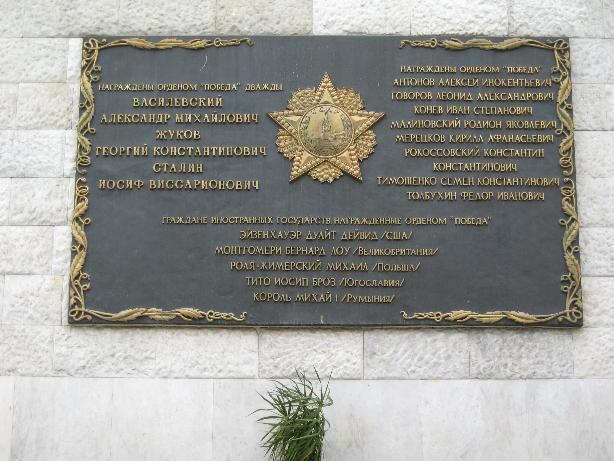
Soviet war memorial plaque on Kremlin wall - mentions Marshal Zhukov, Stalin, and others
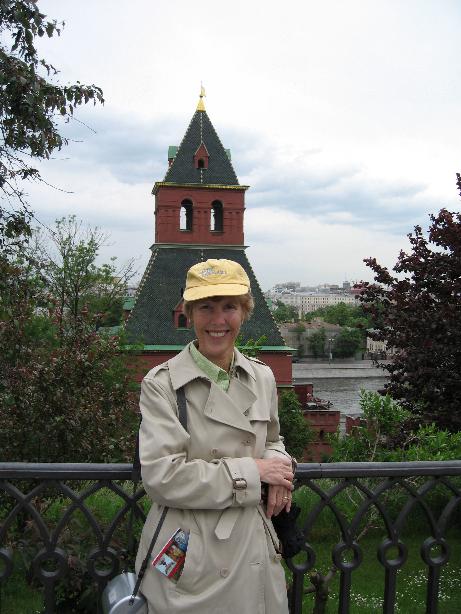
Marilyn in Kremlin with Moscow skyline
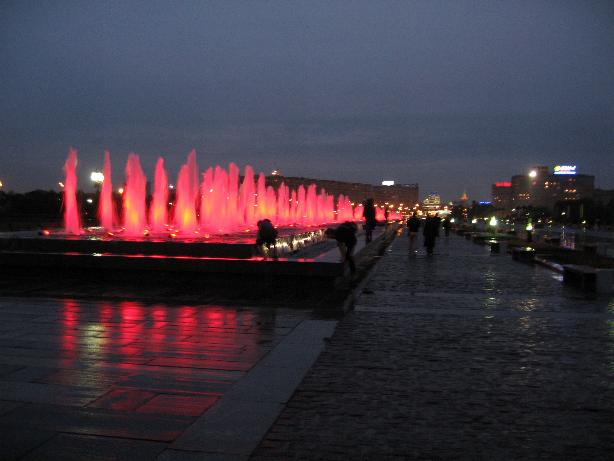
Fountains at Victory Park at night
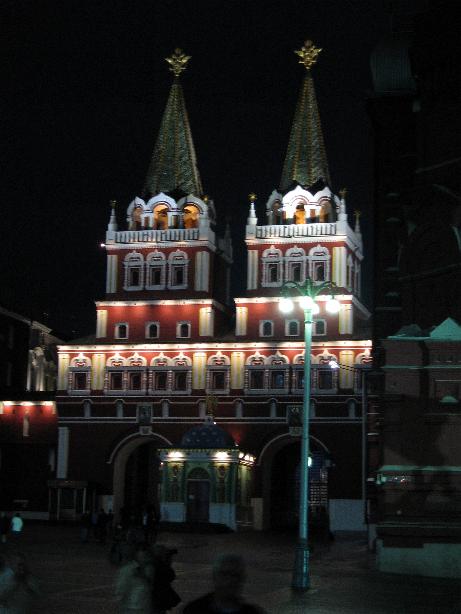
Kremlin gate at night
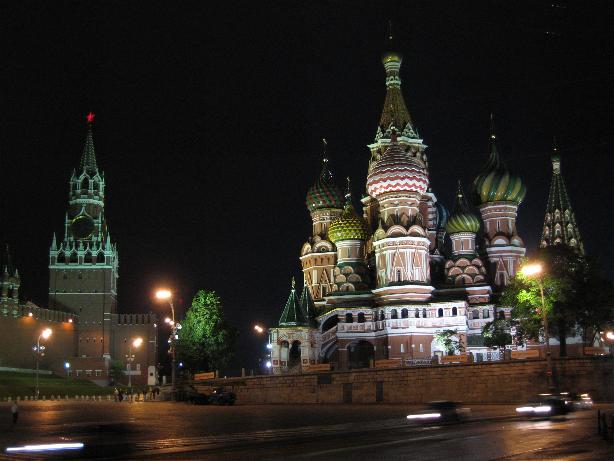
St. Basil's Cathedral at night
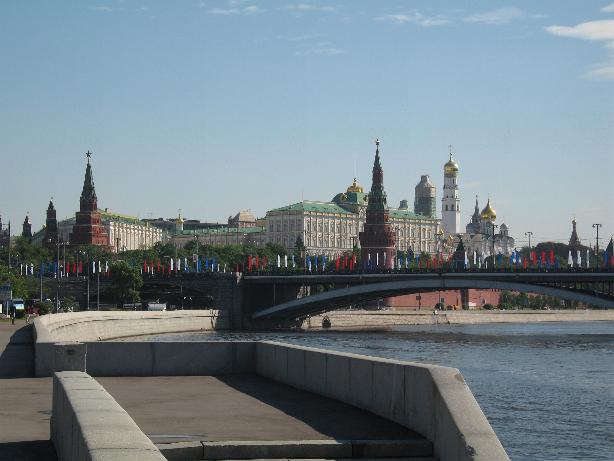
Kremlin
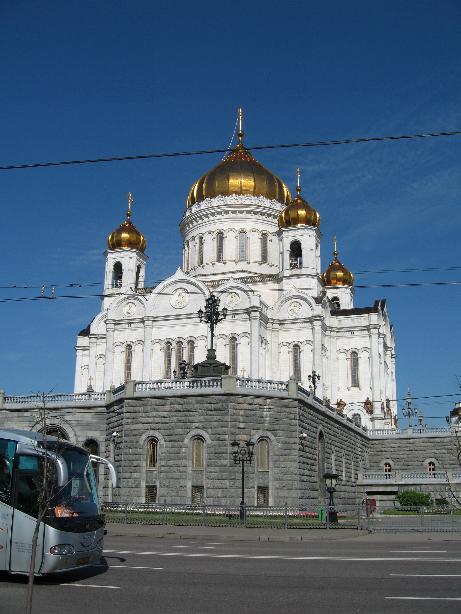
Cathedral of Christ the Savior - In "1931 the head of the Soviet state and of the Communist Party, Joseph Stalin, vicar of Satan, conceived a bold and symbolic plan against the Russian Orthodox Church. He would strike at Christ the Savior of Russia by destroying His temple on the banks of the Moscow River and replacing it with a new "temple" - a Palace of Soviets atop which would stand a colossal statue of Lenin. The height of the Palace and statue would exceed that of the Empire State Building in New York. In 1931, after removing much of the interior decorations and art works, the temple was blown up and the site cleared for the proposed Palace. Several attempts to construct and to stabilize the foundations were frustrated by the slow movement thereof toward the Moscow River. The construction was abandoned and replaced by a public heated swimming pool in use for several decades. The Holy Synod of the Russian Orthodox Church under the leadership of Patriarch Alexy II requested the governments of Russia and the City of Moscow to restore the Temple of Christ the Savior in its original location and design. Knowing well the symbolism of the Temple's restoration in repudiating the old Communist Soviet order and in establishing the new Russian state predicated on the synthesis of "narodnost", "demokrasiya", and Pravoslaviye, Church and State allocated scarce resources to the restoration of Christ the Savior's Temple on the banks of the Moscow River. Moreover the restoration would also serve as a symbol or act of atonement for the past sins of the Russian Church and people during the decades of Soviet rule. By 1995 the foundations of the restored temple were laid and construction proceeded quickly. In 1996 the main cupola and the life-giving cross were restored. The lower Church of the Transfiguration was consecrated. A new festive bell was cast and restored to ring out over Moscow announcing the celebration of Divine Services and advising all that Christ the Savior had trampled death and had risen on the Third Day. The high point of the restoration and integral thereto were the glorification and canonization of the Assembly of Russian Martyrs and Confessors on August 19 - 20, 2000 including the canonization of Tsar Nicholas II, his wife and children as Holy Passion-Bearers. On Sunday, August 20, following the canonization, the Temple was consecrated to the worship of Christ the Savior during the Hierarchal Divine Liturgy celebrated by Patriarch Alexy II, the members of the Holy Synod and by various Eastern Orthodox hierarchs from around the world. Thus the Temple of Christ the Savior reached its full allegorical significance through its restoration as symbol of the Glorious Resurrection of Christ the Savior." (thanks to http://www.byzantines.net/epiphany/christsavior.htm)
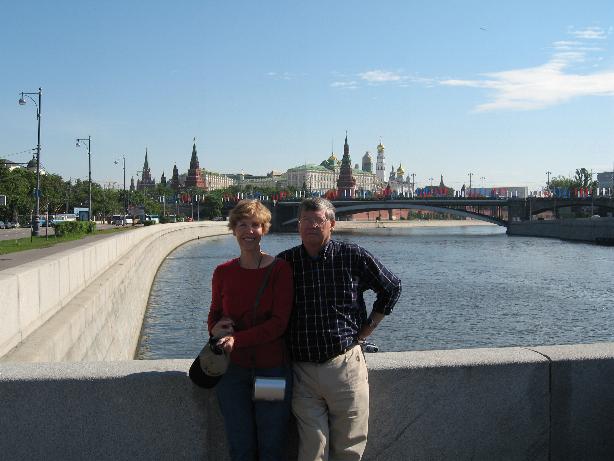
Marilyn and Phil on Moscow River
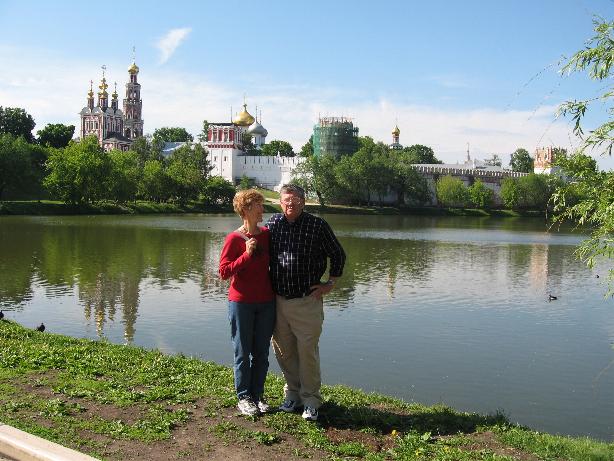
Novodevichy Convent

St. Basil's Cathedral in daylight
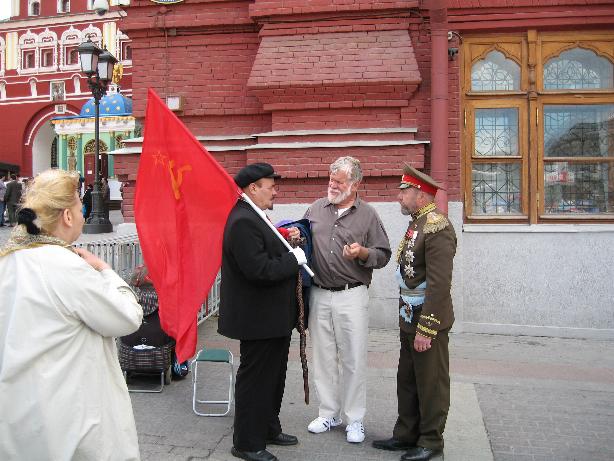
Friend Doug McGowan of Laconia NH talking with Lenin and Tsar Nicholas II impersonators
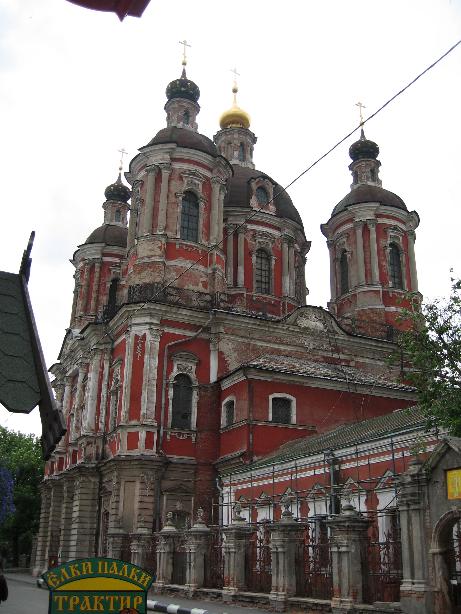
Klimenta Papy Rimskogo Church
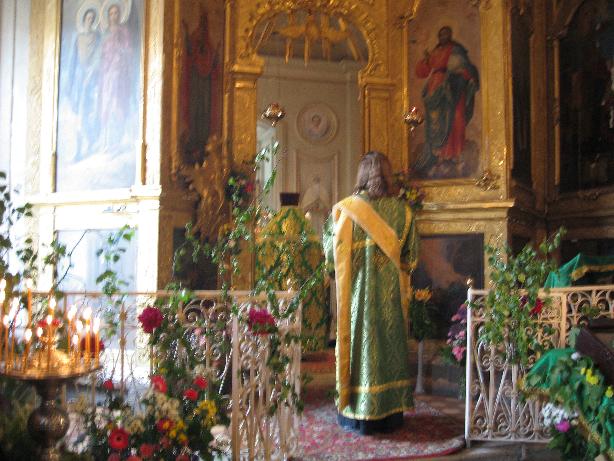
Mass at Klimenta Papy Rimskogo Church
RETURN to Home